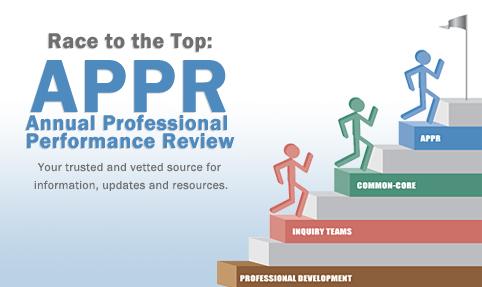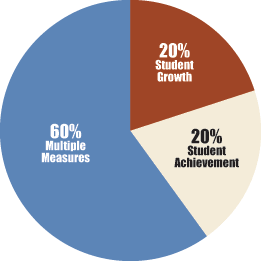What is Your Child's Teacher's APPR Score and Does it Matter?
- Category: Schools
- Published: Wednesday, 23 October 2013 18:13
 After a lovely rendition of "Over the Rainbow" by the Fox Meadow Strings orchestra, Dr. Michael McGill, Superintendent of Scarsdale Public Schools, gave a briefing on New York State's Annual Professional Performance Review (APPR) mandate and how Scarsdale schools fulfill this state requirement. Also presented was how parents can access their child's teacher's and principal's scores.
After a lovely rendition of "Over the Rainbow" by the Fox Meadow Strings orchestra, Dr. Michael McGill, Superintendent of Scarsdale Public Schools, gave a briefing on New York State's Annual Professional Performance Review (APPR) mandate and how Scarsdale schools fulfill this state requirement. Also presented was how parents can access their child's teacher's and principal's scores.
New York State's APPR mandate requires that Scarsdale schools grade and score all teachers and principals on performance using a standardized method. They are assigned a numeric score (between 1 and 100) and a grade of H (highly effective), E (effective), D (developing), or I (ineffective), also known as HEDI based on the numeric score.
The objectives of the Scarsdale schools, in terms of the APPR, are to root out effective versus ineffective performance, continuously improve teacher and principal performance, and address substandard performance with support and/or discipline if deemed necessary. Teachers earn performance points in the following ways:
- Up to 20 points for state test scores- Lynne Shain, Scarsdale's Director of Curriculum, explained that teachers are assigned a numeric score based on testing: ELA/math scores in grades 4-8 are used for ELA/math teachers; all other teachers are rated by test score average by school which is then converted to points. (Counselors, psychologists, and speech teachers are excluded.)
- Up to 20 points for locally selected standardized measures- This is based on state test averages, by school, and is converted to points.
- Up to 60 points for classroom observations and other evidence of performance- Teachers and principals are rated using HEDI. They are observed and evaluated by a supervisory-level individual in the classroom, and score is based on lesson planning, instruction, and professionalism, for example. Their HEDI rating is then converted to a numerical score.

Dr. McGill cautioned that a teacher may have an H or E rating in one area, and a D or I rating in another area. "It's more an art than a mechanical operation like the way the State is trying to make it," said Dr. McGill. The district approach to this is to try to improve teacher performance in the underperforming areas as much as possible, and to keep the APPR non-competitive between teachers. Factors out of an individual's control may account for part of their rating. For example, Kenneth Bonnamo, Principal of Scarsdale High School, will receive a lower score this year due to a low test score rating. Dr. McGill warned that the state formula itself skewed the principal's rating lower than it should be based on factors such as number of student's taking the regents exam, which is less applicable in this case.
Dr. Joan Weber, Assistant Superintendent for Personnel, discussed the newly implemented, standard protocol for handling parent requests for a teacher's or a principal's APPR score. A parent may request the APPR score of their child's current teacher, but Dr. Weber reminded people that the available score is based on the previous academic year. Parent access to the principal's scores will be a composite score and HEDI rating. The process to request a score will be posted online. According to Dr. Weber, parents should be aware that they must call or email her to request a form that they will need to fill out if they wish to know their child's teacher's APPR score. The form will need to be submitted in person and the parent or guardian will need to show ID such as a driver's license. They will be required to sign attesting that they will not disclose the score to anyone who does not have a right to this information in order to respect teacher and principal privacy. Once approved, Dr. Weber's office will call the parent with the information they are seeking.
Board Member Lew Leone asked if parents could request several teachers' scores at once and if an online request process could be used. Weber said that parents can request several scores at once provided their children are currently in these teacher's classes. She said she did not know of any other districts that were disseminating this information online.
A discussion ensued about whether or not the local assessments that were developed by Scarsdale would be used in addition to the state's standardized test results to evaluate teacher effectiveness. The administration said that some of the information gathered from the local assessments would be utilized for the portion of the APPR that is determined by the district.
Board member Mary Beth Gose asked who was doing the evaluations and McGill replied that supervision comes from principals, assistant principals and teachers in charge. In the past, principals had more latitude to respond to specific situations. Now supervisors have to spread out their time and observe all classrooms, whether or not the teacher needs supervision.
In other Board business, PT Council President Pam Rubin thanked the members of the Board of Education for their dedication in recognition of Board of Education Appreciation Week and presented the Board with copies of the book, "The Death and Life of a Great American School District" by Diane Ravitch.
In the public comments section, Vivienne Braun asked for an explanation of the decision-making process to determine how funds from the Scarsdale Education Foundation would be allocated. She also questioned how the Board of Education developed the list of capitol projects that was provided to architects who are currently being interviewed by the district.
 Amy Paulin Urges the NYS Board of Regents to Discontinue CCLS Assessments:
Amy Paulin Urges the NYS Board of Regents to Discontinue CCLS Assessments:
Assemblywoman Amy Paulin along with Assemblymen Abinanti and Buchwald sent the following letter on October 21 to the State Board of Regents regarding the common core and state testing. It is a strong letter regarding what they believe to be the flaws in the program.
Chancellor Merryl H. Tisch
NYS Board of Regents
89 Washington Avenue
Albany, New York 12234
Dear Chancellor Tisch: We believe the current testing program has the potential of doing more harm than good for both students and teachers. While we support the new Common Core Learning Standards (CCLS) and recognize that it must include an assessment component, we believe the shift in the assessments to measure the CCLS is not working. For the following reasons, we urge you to discontinue the current use of the Common Core English Language Arts (ELA) and math assessments and develop and pilot an assessment program that will improve the quality of teaching and learning in our schools.
1. The current ELA and math assessments are not a valid indicator of college or career readiness. This year, most school districts saw a passing rate  inconsistent with the expected achievement of their students. If you looked at the passing rate on the 8th grade math and ELA scores you would conclude that most students will do poorly in high school and struggle in college. Historically, this has not been the case. For example, Pelham, a school district that has spent the past two years diligently aligning instruction and curriculum to the CCLS, saw its scores drop by about 20% in ELA and math, leaving the impression that its students are not prepared for a challenging curriculum. However, a similar cohort of students have traditionally performed very well on the algebra and English regents and have been successful throughout their high school career, taking advanced placement and college level courses, engaging in scientific research, and excelling in academic competitions. This past year, 95% of Pelham's seniors were accepted into four-year colleges, 66% of which are ranked as "most," "highly" or "very" competitive.
inconsistent with the expected achievement of their students. If you looked at the passing rate on the 8th grade math and ELA scores you would conclude that most students will do poorly in high school and struggle in college. Historically, this has not been the case. For example, Pelham, a school district that has spent the past two years diligently aligning instruction and curriculum to the CCLS, saw its scores drop by about 20% in ELA and math, leaving the impression that its students are not prepared for a challenging curriculum. However, a similar cohort of students have traditionally performed very well on the algebra and English regents and have been successful throughout their high school career, taking advanced placement and college level courses, engaging in scientific research, and excelling in academic competitions. This past year, 95% of Pelham's seniors were accepted into four-year colleges, 66% of which are ranked as "most," "highly" or "very" competitive.
The only conclusion we can draw is that these new tests are not a valid measure of whether a student will succeed in college or in a career.
2. The new tests are not improving learning. The shift to align the assessments with the common core curriculum has led to longer tests (i.e. an increase in the number and complexity of multiple-choice questions on the ELA tests). Also, teachers have reported that many of the questions were too vague and did not align with the common core curriculum/content. Students who do not have the stamina to take longer tests or who get frustrated when faced with new material often just give up (which could be skewing the results). While students everywhere are exhibiting test anxiety, we are especially concerned about low performing students who get frustrated more easily. This could result in an antipathy toward learning.
These recent test results have presented our schools with an additional significant challenge. Academic intervention services (AIS) were historically provided to any student in grades 3-8 who scored below proficiency on math or ELA. This year, districts reported that there just was not enough money in their budgets (nor was any forthcoming from the State) to cover the rise in the number of students eligible for AIS. Further, districts' staffing needs were established during last year's budget process. There is no way they could have anticipated the additional staffing needs required to support the many more students who now need AIS.
Granting school districts greater leeway in determining which students should receive remedial help by setting a "threshold" score begs the questions: if the tests are a valid measure of student achievement then why do districts need to manipulate the scores and why are we denying low-scoring students the support services they truly need?
3. The new tests are not improving instruction. Currently, teachers are not allowed to see the completed tests for each student; they receive only an aggregate score. Districts require more than just sampling or model questions to improve instruction. Individual test items must be provided so that meaningful programmatic adjustments can be made for each child and for the entire class. Also, as it stands now, teachers receive the test results well into the following school year denying them the opportunity to adjust lesson plans for the entering class. Teachers need to receive the results before the start of the school year.
Just recently, we read that NYC schools had not received the new English and math text- books and other materials which match the tougher CCLS, presenting yet another reason to slow down the shift in assessments.
There is a lot at stake – a child's self esteem and a teacher's reputation and perhaps career path are tied to these tests, putting a lot of pressure on both teachers and students to do well. We feel that teachers need this valuable time to teach critical thinking skills in an unpressured, stimulating environment.
4. The new tests are not a reliable measure of a teacher's ability. While the aggregate number of teachers falling into the State's "effective" and "highly effective" categories has remained constant for two years, the rating system is less reliable when applied to an individual teacher. Too many teachers who were rated "highly effective" or "effective" last year were rated "ineffective" this year. Teachers do not change dramatically in one year. Receiving a low grade, especially after receiving a high grade in the prior year, is demoralizing and is not a reliable indicator of performance. Fortunately, most districts have adopted evaluation plans that minimize the impact of any one score. However, once the information is made public, a teacher is branded.
5. The cost of testing is creating financial hardship especially on school districts with fewer resources. Two districts, Locust Valley and Scarsdale, have estimated the cost of testing at between $2.5 and $2 million (includes the cost of data collection and lost teaching time), respectively. The cost may be higher for a larger district. While most school districts are struggling to stay within the tax cap, poorer districts have found it an even greater challenge and have already cut staff and programs, increased class size, and eliminated extra-curricula or enrichment programs. Running out of options, they will have to dig even deeper to meet their financial obligations to the detriment of the students.
The mandate to use computers for on-line testing by 2015 is another financial and educational dilemma for most school districts. Many districts, but especially the poorer ones, just do not have the technical capability nor the financial resources to implement this mandate by 2015. Also, all districts will be forced to give up instructional time by using the computer lab exclusively for testing. Schools and students have come to rely on computer labs for instruction, homework, and research assignments, all of which will be curtailed by this mandate.
We believe that State Education Department is moving too fast. We urge you to take the time to design an exemplary testing program that will be used as a model for improving teaching and learning for many years to come.
Thank you for your consideration and for all that you do for the students of New York State.
Sincerely,
Amy R. Paulin
Thomas J. Abinanti
David Buchwald
See an interview with Chancellor Tisch on the Common Core Learning Standards here:
Commenting on Paulin's letter, Schools Superintendent Michael McGill said,
"The Assembly members' letter to the Board of Regents outlines concerns about how the State Education Department is implementing its testing and teacher evaluation policies. It's a well-considered and thoughtful effort to address issues of immediate concern.
The longer term problem is the underlying assumption: that you can improve schools in some meaningful way through a process of audit and compliance. That's basically what all the testing and all the metrics are about.
Instead of using tests as they should be used -- to help teachers and schools learn how to do a better job -- the state is using them mainly for accountability. Because it's so obsessed with rating teachers on the basis of students' scores, for example, it's made a huge priority of test security. As a result, educators don't have access to critical information -- like which questions a student got right or wrong -- that would help them improve learning.
The best the state's approach can do is drive schools -- Scarsdale included -- toward an education that's low average in quality."














